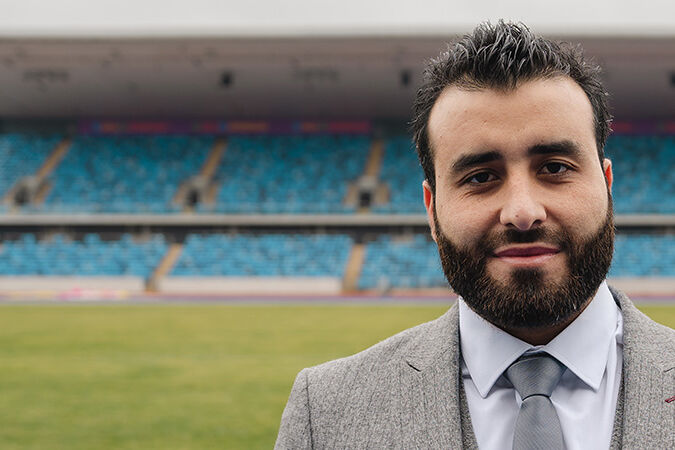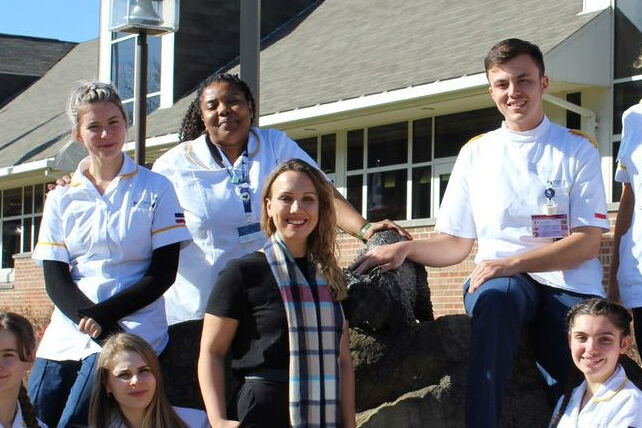Sports Science is leading the way in developing sports teams and individuals to perform at their best. Eliud Kipchoge recently made history by completing a marathon in under two hours, which was made possible through the advancement in sport science technology, research and expert professionals.
Studies suggested that it would take until 2023 to beat Kipchoge's 2017 record of 2:00:25 to run a marathon in under two hours, but recent events proved those wrong. Dr Matt Cole, Sport and Exercise Nutrition course leader commented “this exhibition is a great demonstration of what can be achieved if the conditions are perfect.” We explore how the different aspects of sports science helped the superior marathon runner Kipchoge to be the fastest person in history to complete 26.2 miles in under two hours.
Running environment
Organisers planned the 'ideal' environment for a race of this magnitude to happen, making sure that the route was flat, had minimal turns that weren't too sharp and close to sea level to provide plenty of oxygen. Also the time of day and weather were huge factors - the run began at 8.15am to make the most of the ideal running conditions (low humidity and temperatures, dry and foggy).
Pacesetters

Kipchoge had pacesetters around him throughout the entire race in a V shape to protect him from the wind. The pace setters were made up of some of the world's best athletes who were able to run at 4:34:5 per mile pace and changed over at the finish line of each lap. Ahead of the pacesetters were cars showing the predicted finish times and a laser system to indicate where they should run.
Psychology
Psychology is a big part in improving performance and played a huge part in Kipchoge's race - from the thousands of people who lined the streets in Vienna to cheer him on, to the rotating cast of runners who consistently jogged around him to keep up the pace. Michael Joyner commented that first place runners often pay as "psychological price when in front" and that having others around to take pace and be able to tap into their rhythm would have been very helpful for Kipchoge.
Considering how to motivate athletes and individuals to excel, train and perform to the best of their ability is one of the main factors in Sports Science. Sport Psychologists teach cognitive and behavioural strategies to athletes in order to improve their experience and performance in sports, as well as develop an understanding of how skill acquisition facilitates the long term-development of youth athletes in academies and talent pathways.
Nutrition

Athletes are expected to perform to the best of their ability, and in order to perform optimally it is essential that an athlete fuels that performance appropriately.
Kipchoge's race depended on the weather, so the exact day could not be predicted. Not knowing which day it would fall on made it difficult to implement nutritional strategies, but carbohydrates were increased in the run up to the event. Not only this, but during the race Kipchoge was regularly handed a drink called Maurten that contains carbohydrates to fuel him while running too.
Nutrition is vital in sports performance but also plays an important role in influencing body composition, exercise recovery, injury risk, mental health, immune function, and the risk of a developing a number of clinical conditions.
Custom made shoes
In 2017 Kipchoge ran the marathon in Nike's Vaporfly four per cent trainers that claimed to make runners four per cent faster and more efficient. However on the day, Kipchoge wore a new variation of these that were custom made called alphaFLY that are said to feature four pods of foam and three carbon fibre plates to get the most out of a runner's performance.
Dr Matt Cole, commented that “the huge improvements and new records in recent years can largely be attributed to the Vaporfly trainers, and variations of these. They have provided such a huge technological advantage for athletes, in such a short space of time – that begs the question whether it’s much different to mechanical doping in cycling Regulations state that the trainers used should not offer a competitive advantage and should be widely available to all to ensure a level playing field – something which Kipchoge’s custom made shoes aren’t and therefore it is difficult to compare to real world records”
All these factors of sports science combined with Kipchoge's superior athletic qualities make history and future possibilities endless.






